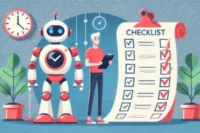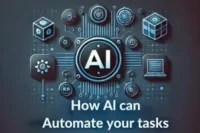Types of AI Tools: Transforming Industries and Everyday Life
Published: 01 Jan 2025
Artificial intelligence (AI) is transforming how we live and work. Did you know that AI is already helping doctors diagnose diseases like cancer earlier than humans can? From healthcare to business, AI tools save time, reduce mistakes, and make tasks easier. These tools enable machines to think and learn like humans, performing problem-solving and pattern-recognition tasks. In this blog, we’ll explore different types of AI tools and their real-life applications, showing how AI is transforming industries and making a significant impact on our daily lives.
1. Machine Learning Tools

What is Machine Learning?
Machine learning (ML) is a type of AI that allows systems to learn from data and improve over time without being specifically programmed for each task. It’s like teaching a machine to learn from examples, much like how we learn from our experiences. For example, an AI can learn to recognize pictures of cats by being shown lots of cat images.
Popular Machine Learning Tools
| AI Tool | Overview | Popular Use Cases | Did You Know? |
|---|---|---|---|
| TensorFlow | Open-source tool for machine learning & deep learning. | Image/speech recognition, predictive analytics. | Google’s secret weapon! TensorFlow powers YouTube recommendations! |
| Scikit-learn | Easy-to-use tool for ML, perfect for beginners. | It’s the go-to tool for quick, practical data science projects. | It’s the go-to tool for quick, effective data science projects. |
| PyTorch | Deep learning tool for research & production. | NLP, image/speech recognition, complex AI tasks. | Loved by researchers, PyTorch is in almost every cutting-edge AI paper! |
Question: “Have you ever wondered how Netflix knows exactly what to recommend to you?”
Real-Life Example:
Netflix’s Recommendation System
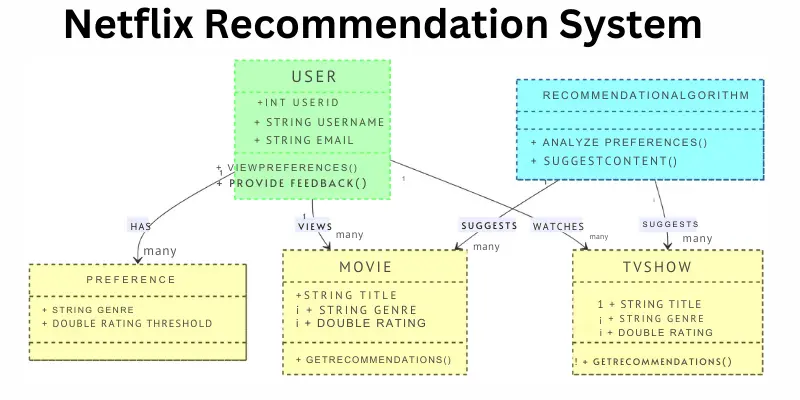
Have you ever wondered how Netflix knows what to suggest? It uses machine learning tools to analyze your watching habits, such as the types of shows you watch and how often you watch them. Based on this data, the system learns what you might enjoy next, giving you personalized suggestions.
2. Natural Language Processing (NLP) Tools
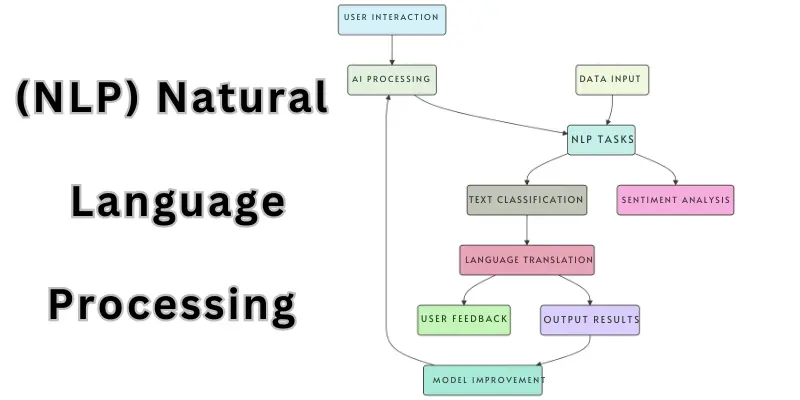
What is NLP?
Natural Language Processing (NLP) is an AI field that focuses on helping machines understand and process human language. It allows computers to read, interpret, and respond to text or speech in meaningful ways. Whether it’s reading a sentence or answering a question, NLP helps AI “speak” our language.
Popular NLP Tools
| NLP Tool | Description | Use Cases | Interesting Fact |
|---|---|---|---|
| NLTK | A powerful toolkit for processing human language data. | Text analysis, tokenization, part-of-speech tagging. | NLTK is often used for educational purposes and has vast documentation. |
| SpaCy | A fast, efficient NLP library for large-scale text processing. | Named entity recognition, text classification, dependency parsing. | SpaCy is known for its speed and is a go-to for production-ready NLP apps. |
| GPT (ChatGPT) | A deep learning model that generates human-like text responses. | Chatbots, content creation, answering questions, and text generation. | GPT models are used in a wide range of applications from writing to coding. |
Real-Life Example:

AI Chatbots for Customer Service
Companies use NLP tools to create AI chatbots that help customers 24/7. These chatbots understand customer questions and provide relevant answers quickly. They can even handle tasks like booking appointments or troubleshooting issues, making customer interactions smoother and more efficient.
4. Robotic Process Automation (RPA) Tools

“Can you think of any repetitive tasks that AI could automate at your job?”
What is RPA?
Robotic Process Automation (RPA) refers to AI tools that automate repetitive, rule-based tasks in business processes. These tasks could include things like data entry, processing transactions, or managing emails. By using RPA, businesses can save time, reduce human error, and improve efficiency by letting robots handle the tedious work.
Popular RPA Tools
| Tool | Description | Key Features | Common Uses | Industries |
|---|---|---|---|---|
| UiPath | Automates tasks like data extraction and invoicing. | Easy-to-use interface, Drag-and-drop workflow design | Data extraction, Invoice processing | Finance, Healthcare, Customer Service |
| Blue Prism | Strong security and scalability for complex processes. | High security, Scalability, Multi-environment support | Data management, Transaction handling | Large Enterprises, Finance |
| Automation Anywhere | Cloud-based, integrates AI for wide-range automation. | AI & ML integration, Cloud-based, Easy scalability | Customer service, IT support | Customer Service, IT, Logistics |
Real-Life Example:
Automating Data Entry
Many businesses use RPA tools to automate data entry tasks. For example, instead of manually inputting customer details from emails or forms, an RPA bot can do it automatically. This saves employees from repetitive tasks and frees up time for more important work.
5. AI for Data Analytics
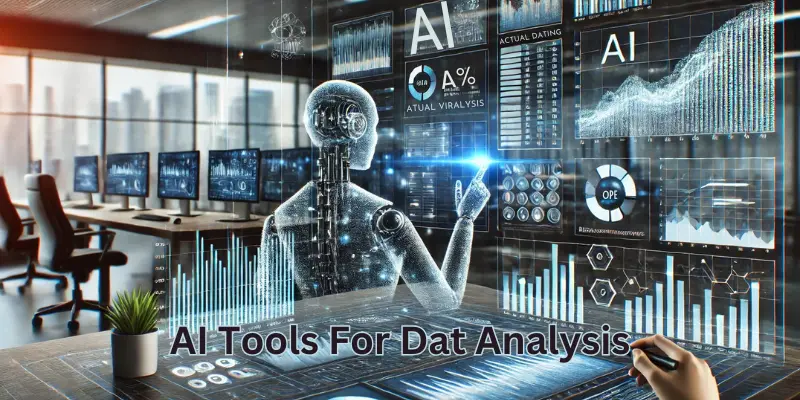
What is AI in Data Analytics?
AI in data analytics refers to the use of artificial intelligence tools to analyze large amounts of data. These tools help uncover insights, detect patterns, and predict trends that would be hard for humans to spot. By using AI, businesses can make smarter decisions, optimize processes, and even predict future outcomes based on past data.
Popular AI Data Analytics Tools
| Tool | Description | Key Features | Common Uses | Industries |
|---|---|---|---|---|
| IBM Watson | A powerful AI platform for analyzing complex data. | Natural Language Processing, Visual Recognition, Predictive Analytics | Data-driven decisions, Trend analysis | Healthcare, Finance, Customer Service |
| RapidMiner | User-friendly tool for data science and machine learning. | Drag-and-drop interface, No coding required | Data mining, Predictive modeling, Customer segmentation | Marketing, Finance, E-commerce |
| Alteryx | Automates data preparation and blending. | Data cleaning, Integration, Visual analytics | Data integration, Reporting, Data visualization | Business Intelligence, Marketing, Finance |
Real-Life Example:
Predictive Analytics in Marketing
Businesses use AI-powered tools to predict customer behaviour and forecast trends. For example, a retailer might use AI to analyze past shopping patterns and predict what products customers are likely to buy next. This allows the business to tailor marketing campaigns and inventory plans to meet future demand, improving sales and customer satisfaction.
6. AI in Creative Tools
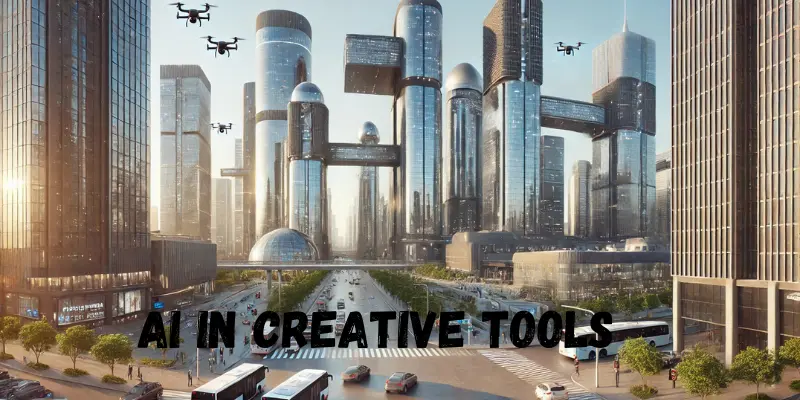
What are AI Creative Tools?
AI creative tools are designed to help with the creation of art, music, writing, and other creative works. These tools use AI to enhance creativity, speed up the process, and open up new possibilities. Whether it’s generating art, writing blog posts, or composing music, AI is making creativity easier and more accessible for everyone.
Popular AI Creative Tools
| Tool | Description | Key Features | Common Uses | Industries |
|---|---|---|---|---|
| DALL·E | AI tool that generates images from text descriptions. | Text-to-image generation, Creative visuals | Ad design, Entertainment, Marketing | Advertising, Design, Entertainment |
| Jasper | AI writing assistant for blog posts, marketing copy, etc. | Generates text based on prompts, Improves writing quality | Content creation, Copywriting, Social media | Marketing, Content creation, E-commerce |
| Adobe Sensei | Enhances creative workflows with AI in Adobe tools. | AI-driven design suggestions, Automates editing tasks | Image editing, Video Creation, Design | Photography, Design, Video editing |
Real-Life Example:
AI-Generated Art and Content
AI tools like DALL·E and Jasper are transforming how companies create marketing materials. For example, a brand might use DALL·E to generate a custom image for an ad campaign or Jasper to write catchy copy for social media posts. These tools save time and provide fresh, unique content for marketing, advertising, and even entertainment.
| Exciting AI Facts That Will Surprise You |
|---|
|
Question: Have you ever wondered how AI could help your business?
FAQs:
AI is the technology that allows machines to perform tasks that typically require human intelligence, like understanding language, recognizing patterns, and solving problems.
Machine Learning enables computers to learn from data and improve their performance over time without being explicitly programmed for each task.
AI refers to any technology that mimics human intelligence, while Machine Learning is a subset of AI that focuses on learning from data to make predictions or decisions.
NLP helps machines understand and interpret human language, enabling them to process and respond to text or speech naturally.
AI chatbots help businesses provide 24/7 customer support, answer questions, and automate tasks like booking or troubleshooting.
RPA automates repetitive tasks in business processes, such as data entry and transaction handling, to save time and reduce errors.
Yes, AI tools can analyze medical data to detect diseases like cancer earlier than humans, improving diagnosis and treatment.
AI analyzes customer behaviour to predict trends, optimize campaigns, and offer personalized recommendations, increasing engagement and sales.
AI creative tools, like DALL·E or Jasper, help generate content such as images, text, and music, making creative work faster and easier.
While AI automates tasks, it complements human work by handling repetitive jobs, allowing humans to focus on more creative and strategic tasks.
Conclusion
In this blog, we’ve explored various AI tools, such as Machine Learning tools (TensorFlow, PyTorch), Natural Language Processing tools (NLTK, GPT), and Robotic Process Automation tools (UiPath), showing how they’re transforming industries like healthcare, business, and creative arts. As AI continues to evolve, it will become even more intuitive and capable of solving complex problems, driving productivity and innovation. Whether you’re looking to automate tasks, generate creative content, or make data-driven decisions, AI tools can enhance your work. The future of AI is bright—start experimenting with these tools today to revolutionize your work or business.

- Be Respectful
- Stay Relevant
- Stay Positive
- True Feedback
- Encourage Discussion
- Avoid Spamming
- No Fake News
- Don't Copy-Paste
- No Personal Attacks

- Be Respectful
- Stay Relevant
- Stay Positive
- True Feedback
- Encourage Discussion
- Avoid Spamming
- No Fake News
- Don't Copy-Paste
- No Personal Attacks


